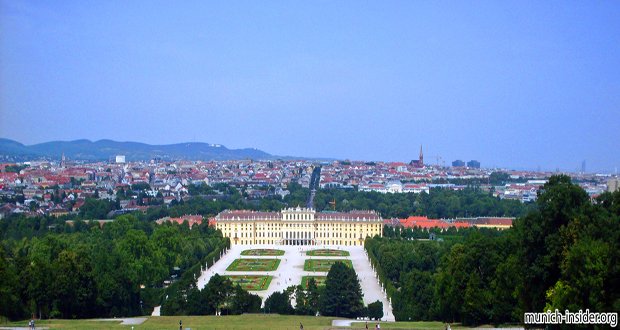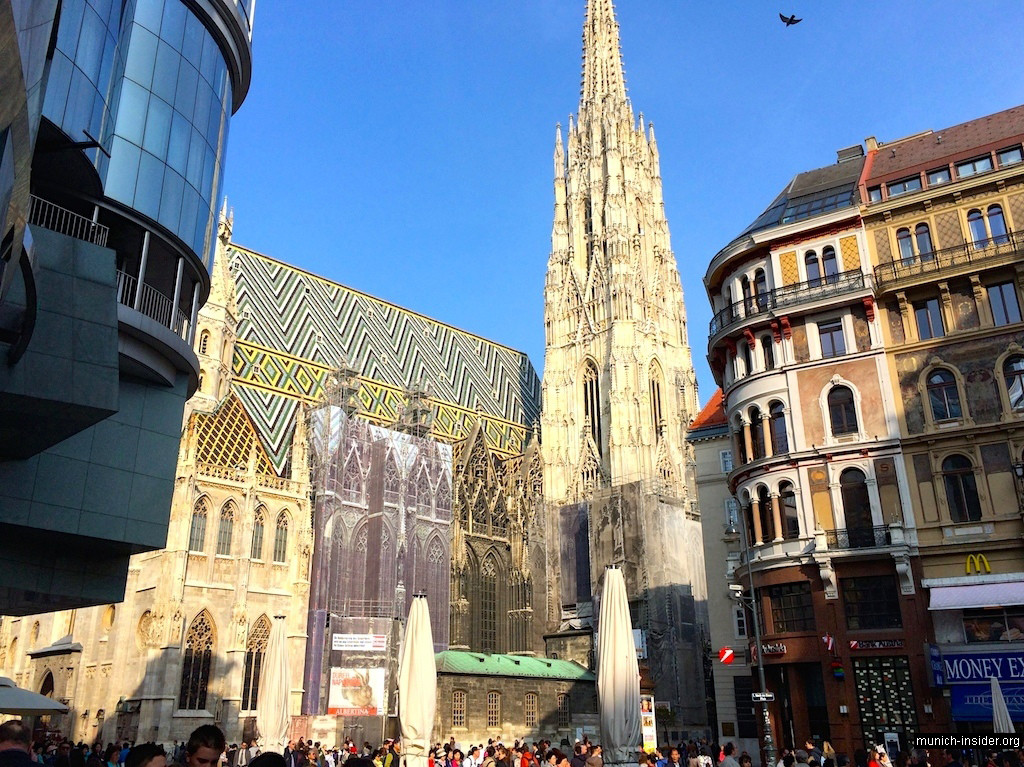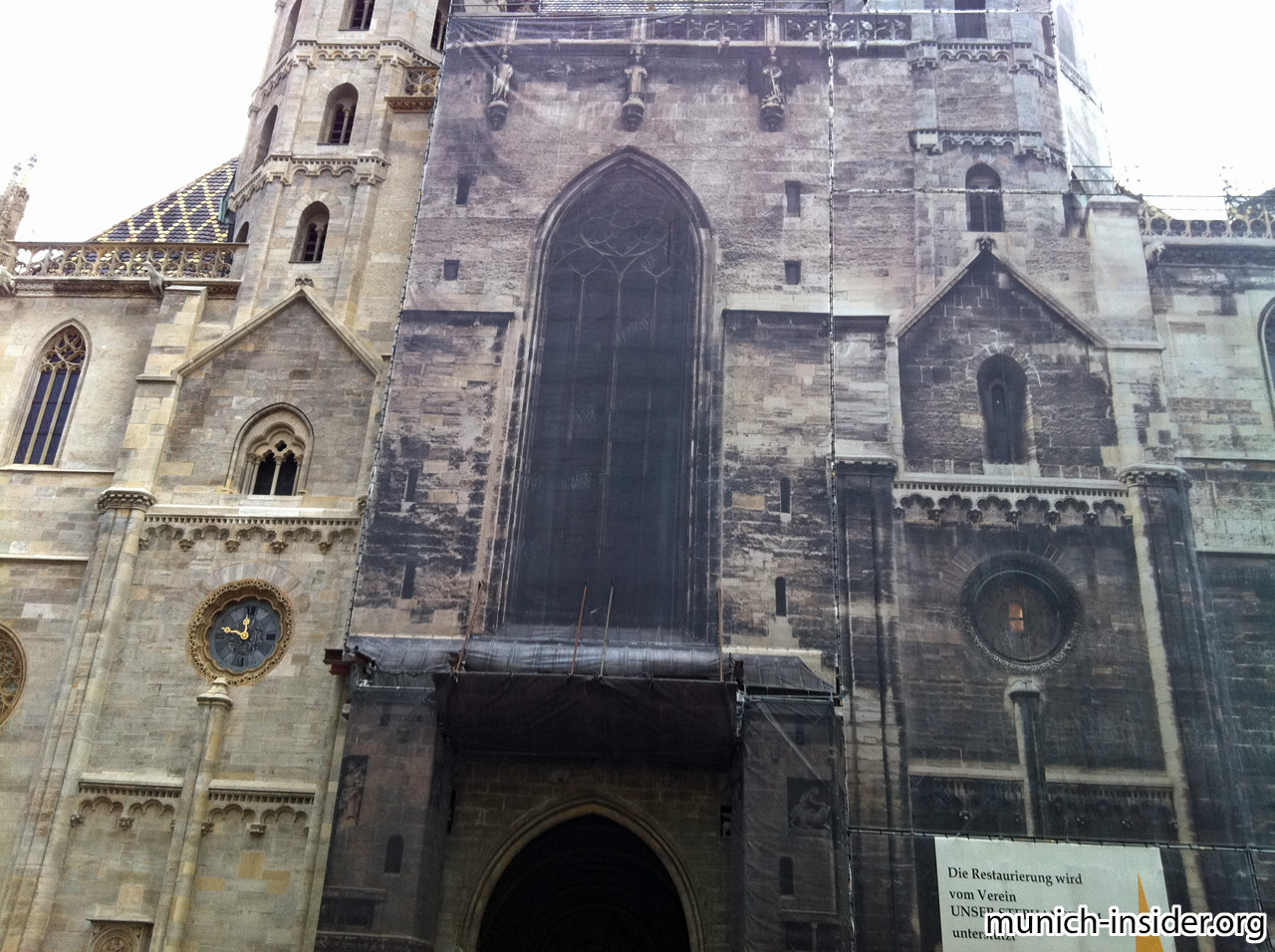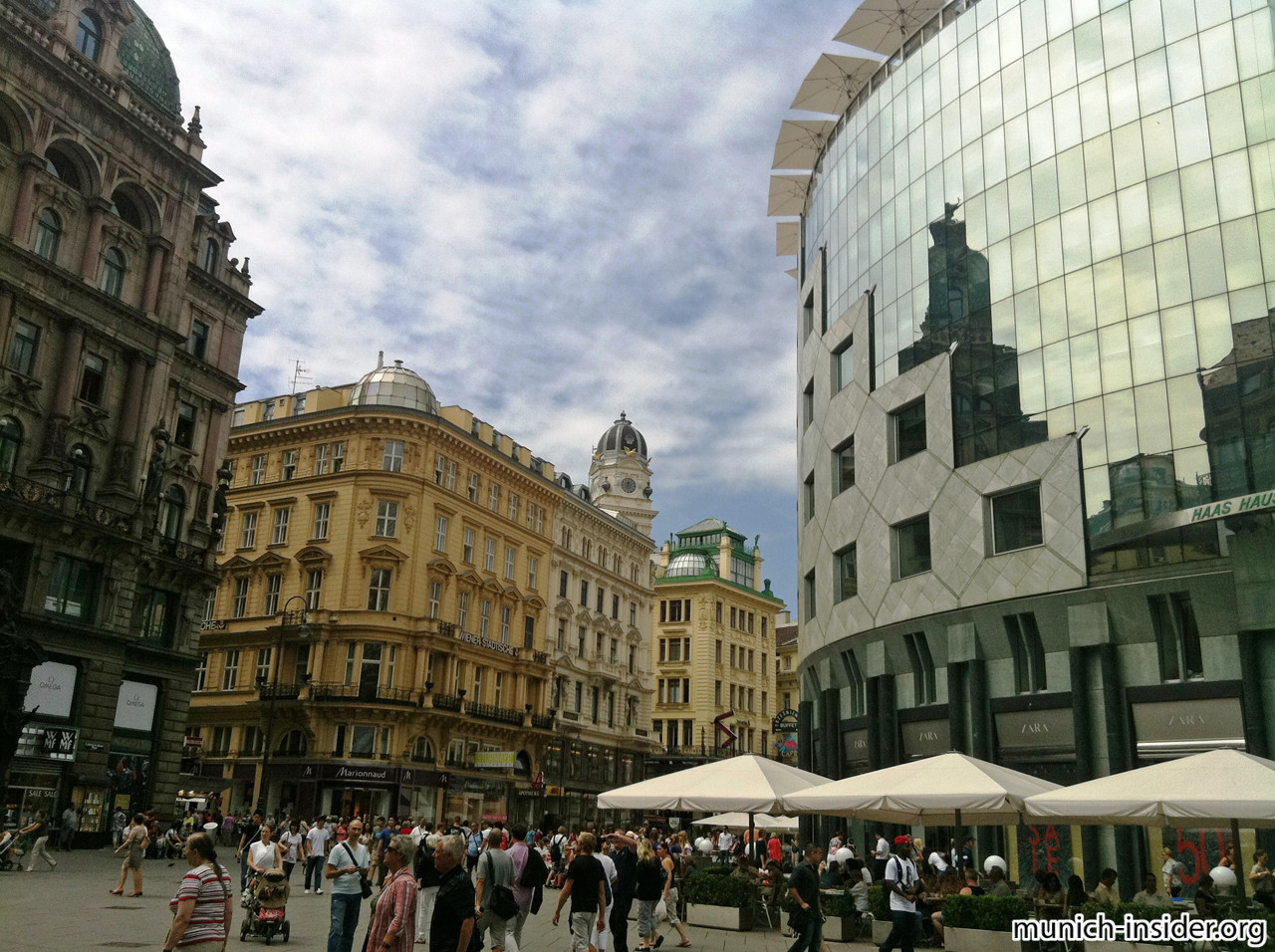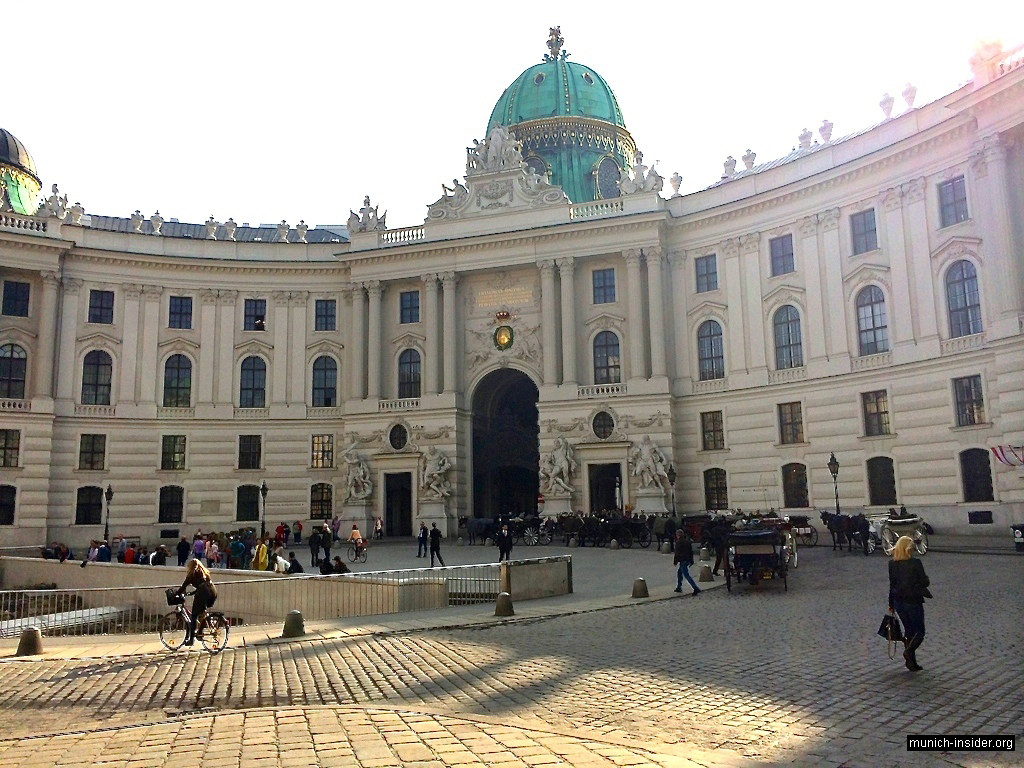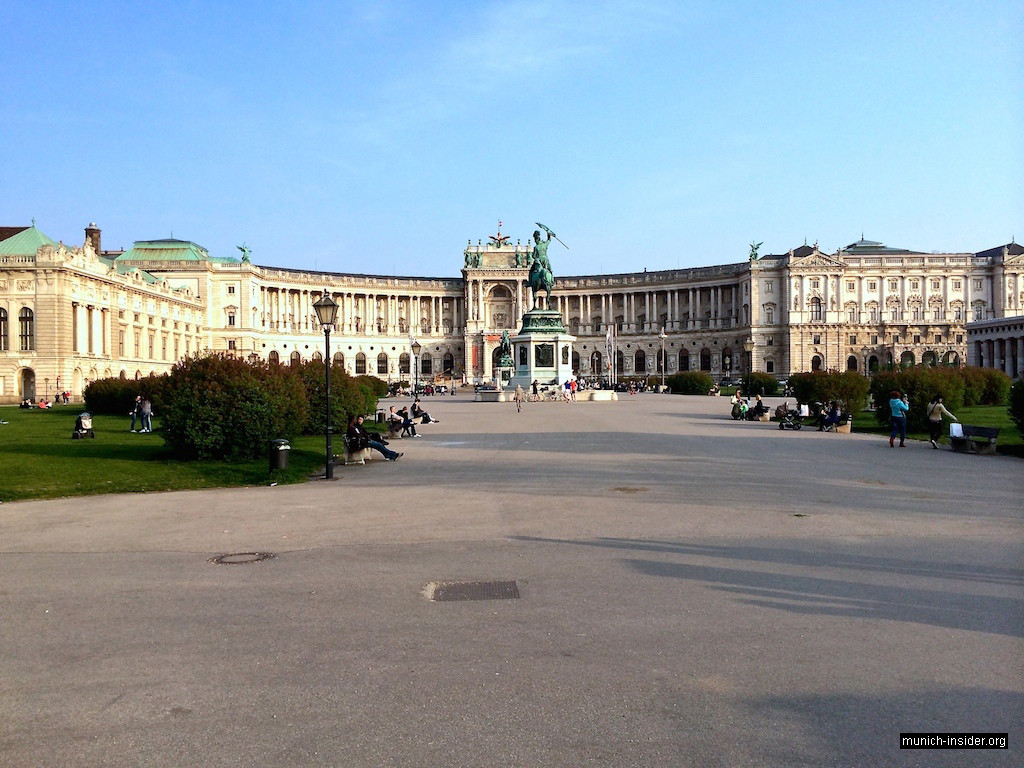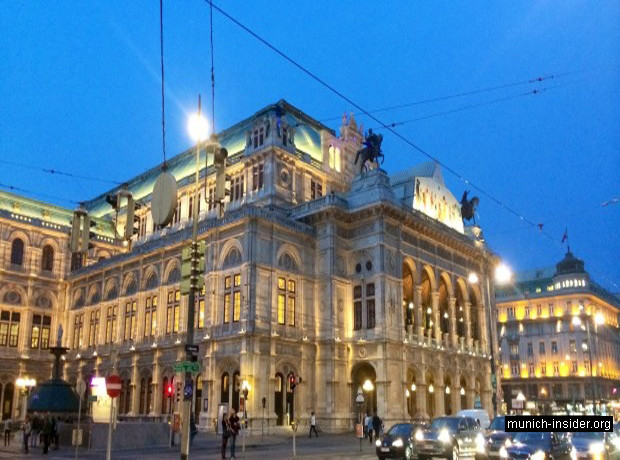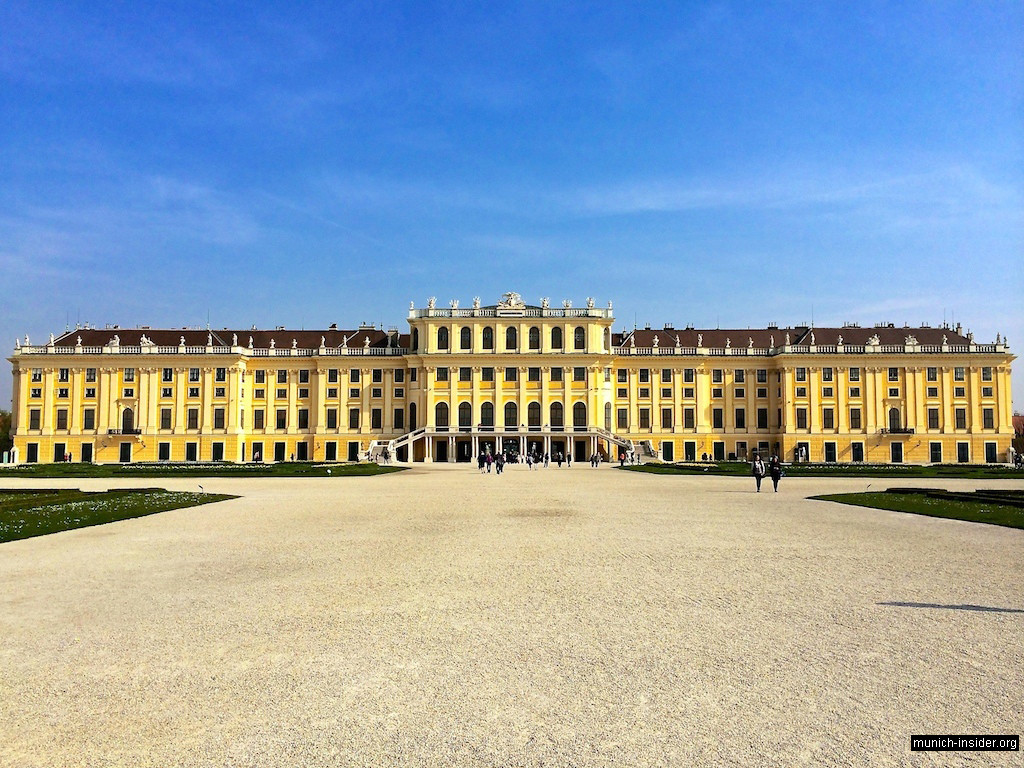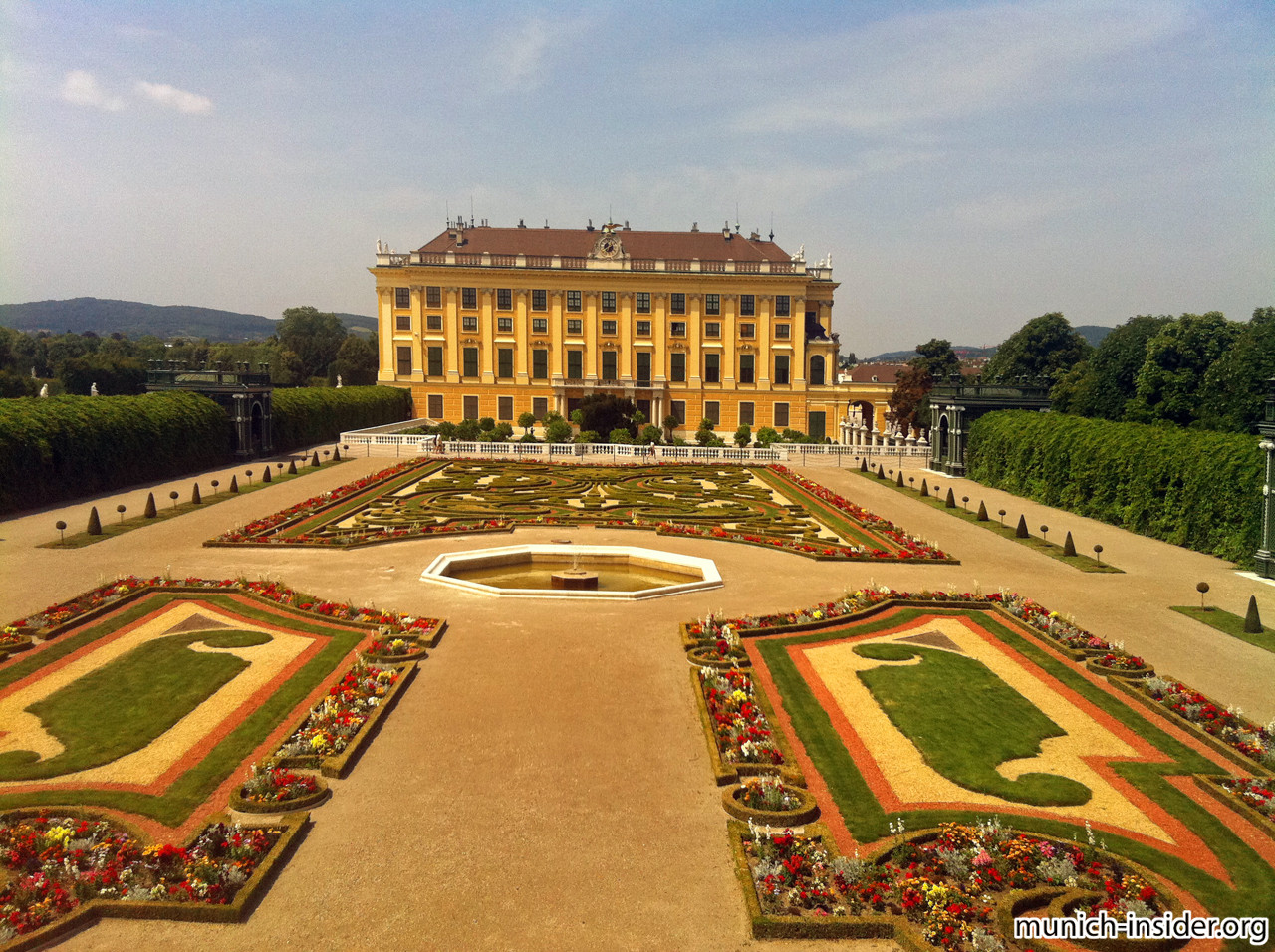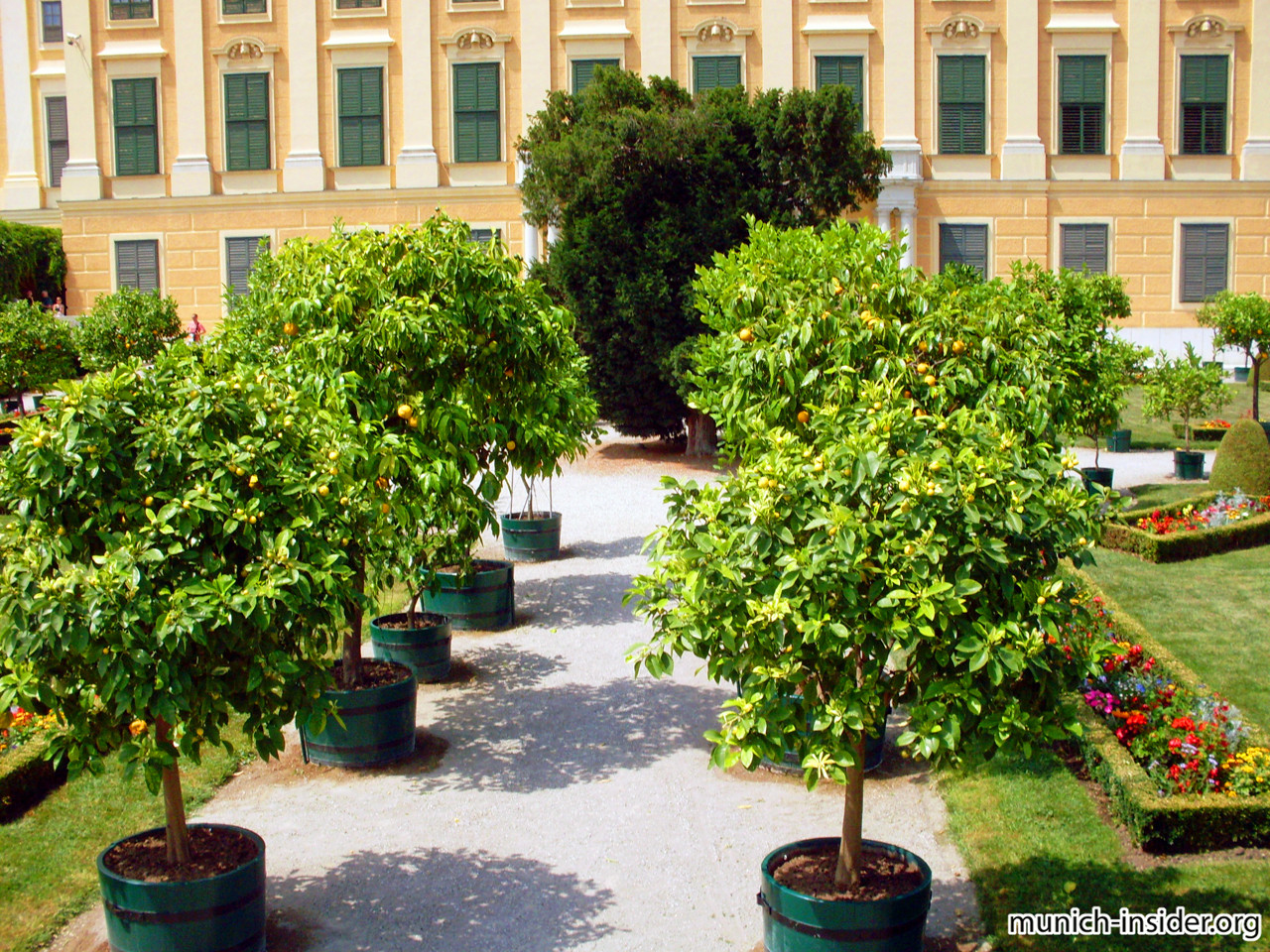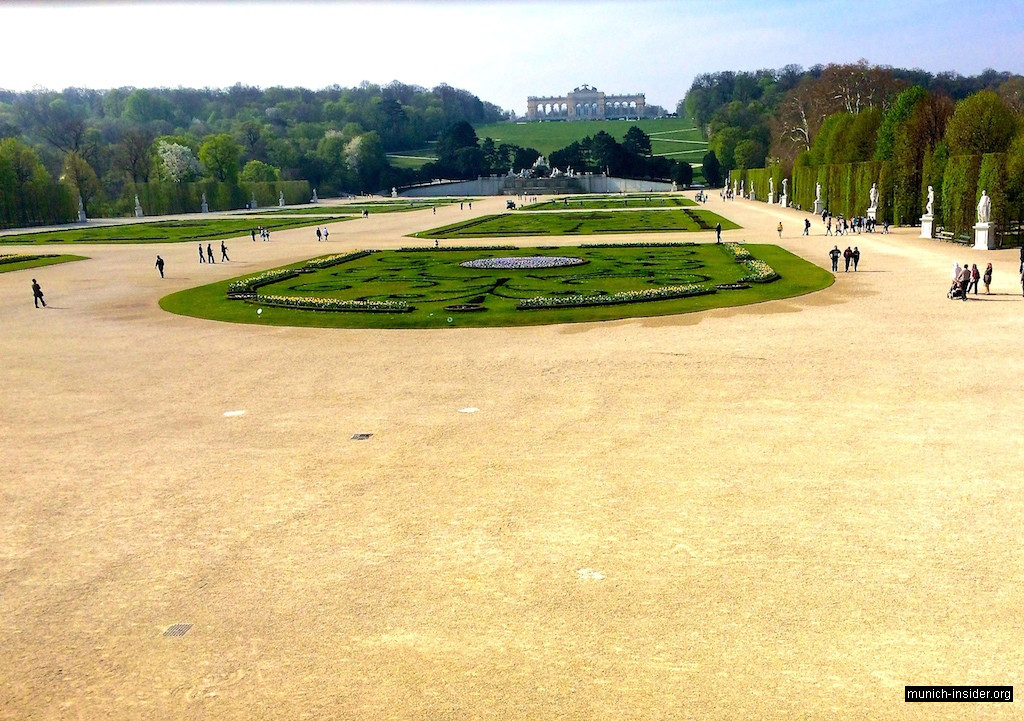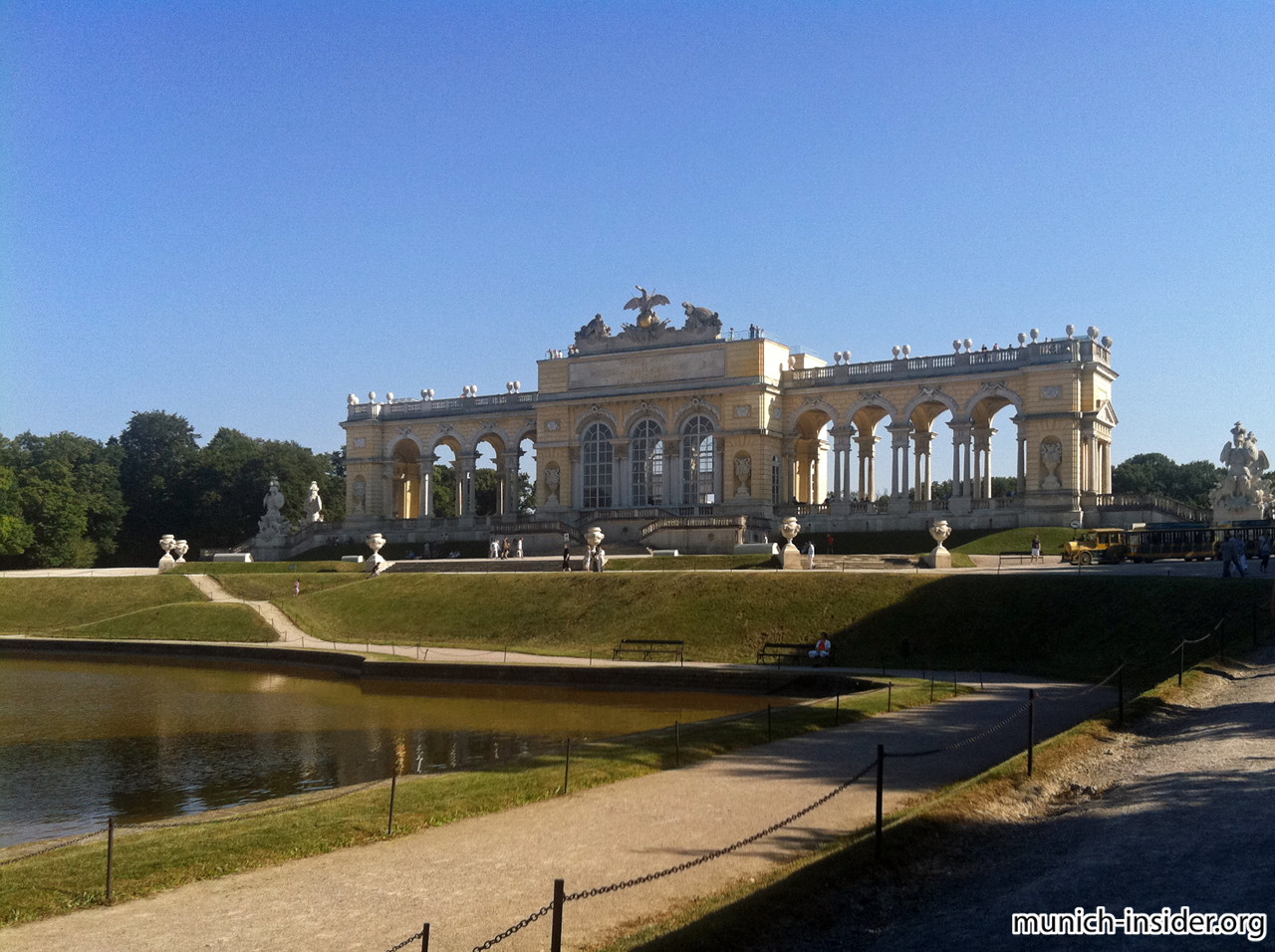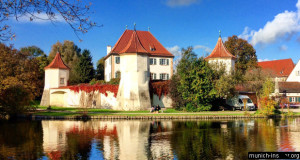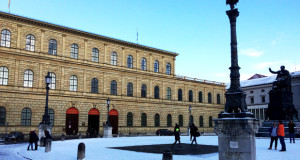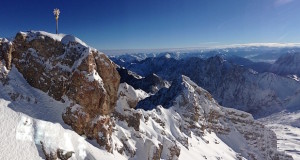Munich-Vienna by train: ~4 hours each way by high-speed train, ~6.5 hours by sleeper train.
Entire trip: 2 days minimum
What to see: St. Stephen’s Cathedral, St. Peter’s Church, St. Michael’s Church, Graben, Mihaelertor, Burghof, Hofburg, Maria-Teresien-Platz, National Theatre, Parliament, Vienna City Hall, Vienna State Opera, Schönbrunn Palace, Belvedere Palace, Hundertwasserhaus, Giant Ferris Wheel in Prater Park.
Getting to Vienna from Munich
We travelled to Vienna by train, because the autobahn to Vienna is usually very busy and we did not want to spend time in traffic jams. Moreover, it is not that easy to drive and find parking spots in the Vienna inner city. On the other hand, public transit in Vienna is one of the best in the world.
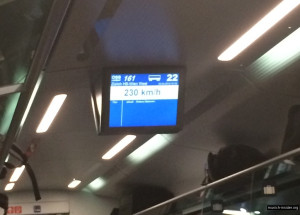 Railjet, the new high-speed train, sometimes almost flies, as its name implies, at a speed of 230 km/h (143 mph). However, the train makes several intermediate stops, so it takes about 4 hours to get to Wien Westbahnhof (Vienna West Train Station). It is very comfortable: free WiFi, electrical outlets under the seats, snack and drink service. By the way, there are overnight trains with coaches and sleeping cars from Munich to Wien Hauptbahnhof (Vienna Main Train Station) and back. The train leaves Munich (and Vienna) around 11:30 pm and arrives at its destination, correspondingly Vienna and Munich, shortly after 6 am. However, I find that the journey is a little too short for normal sleep and, moreover, there is not much to do in Vienna that early in the morning. However, the night train may be convenient for the journey back to Munich.
Railjet, the new high-speed train, sometimes almost flies, as its name implies, at a speed of 230 km/h (143 mph). However, the train makes several intermediate stops, so it takes about 4 hours to get to Wien Westbahnhof (Vienna West Train Station). It is very comfortable: free WiFi, electrical outlets under the seats, snack and drink service. By the way, there are overnight trains with coaches and sleeping cars from Munich to Wien Hauptbahnhof (Vienna Main Train Station) and back. The train leaves Munich (and Vienna) around 11:30 pm and arrives at its destination, correspondingly Vienna and Munich, shortly after 6 am. However, I find that the journey is a little too short for normal sleep and, moreover, there is not much to do in Vienna that early in the morning. However, the night train may be convenient for the journey back to Munich.
We had booked a hotel close to Westbahnhof. They allowed us the check in early, so after a brief rest we went to the city center.
It is always better to plan all the tours in advance, especially for short trips. Of course, a week would not be enough to see everything of interest in Vienna. But still there is the crème de la crème: the splendid architecture of Old Vienna, and the famous palaces and parks. So, our plan was simple and clear: spend the first day, including the evening, in the historic city center and visit the other areas on the second day.
First day:
A bit of the historic center of Vienna
We headed to the subway (U-Bahn), on the way studying the free city map we had gotten at the hotel reception. I must say that without a map it is easy to become lost in Vienna. When vising a strange city, I also use a smartphone map and, sometimes, a GPS navigation app. However, being old-school, I often prefer traditional paper maps where I can add hand-written marks, notes etc. Well, back to the trip report…
The very center of Vienna, at least for tourists, is the Stephansplatz square. There is a U-Bahn station with the same name, and this is where we began our self-guided tour. The main attraction on the square is the famous St. Stephen’s Dom (Cathedral); some would say it is the symbol of Vienna. We have already seen a lot of Gothic architecture in Europe, but this church building is certainly impressive. The peaked roof covered with colored tiles in a zig-zag pattern looks very unusual and interesting. The cathedral towers are pretty tall, although we’ve seen church taller towers in Germany. They say that it was forbidden to build churches taller than St. Stephen’s Cathedral in the Austrian Empire. We were still full of energy at the beginning of our walk and decided to climb the main bell tower of the cathedral to admire the city from above. At the entrance to the spiral staircase, we hesitated a little when we saw the sign “343 steps.” Indeed, it was not a walk in a park, but after a lot of sweating we “conquered” the tower.  The reward was a magnificent view of the city. We thought that it would be nice to see Vienna from above at night, but unfortunately the tower is open only until 5:30 pm.
The reward was a magnificent view of the city. We thought that it would be nice to see Vienna from above at night, but unfortunately the tower is open only until 5:30 pm.
We went down and had a brief coffee break in cafe “Aida.” The choice of café was good. We especially liked chocolate cake “Sachertorte”, Viennese specialty. Speaking of coffee. Residents of Vienna, and indeed the Austrians, are great coffee aficionados, almost fanatics in this regard. They have many names of the drink, and some of them are just local jargon. For example, if you ask the waiter for black coffee, he or she might look at you in bewilderment. One needs to ask for “grosser Mokka-Schwarzer,” or if you want coffee with milk, ask for “Melange.” Better yet, take a close look at the carté.
Having rested, we headed to the Hofburg Imperial Palace, the main winter residence of the Habsburg monarchs. They used another palace, Schönbrunn, as their summer residence; it used to be in the countryside, but is now well within the Vienna city limits. We planned to tour it the next day. The way from St. Stephen’s Cathedral to Hofburg lies along Graben, the most famous and fashionable street in Vienna. This pedestrian street is rather short, but very wide, so it could actually be considered not a street, but an elongated rectangular square. Graben is always crowded, it is the favorite promenade for residents and tourists. It is decorate by two fountains and a marble monument, Plague Column, erected after the plague epidemic in the 17th century as a memorial and thank-you symbol that the city was saved. Graben is full of shops, cafés and restaurants. One can find fashion boutiques of many famous brands; the prices are quite high, but the choice is very wide. On the right-hand side of Graben, between two buildings, a little deep into the block we noticed the Baroque façade of St. Peter’s Church. It has one of the most lavish and opulent interiors I’ve even seen in a church.
At the end of Graben we turned left into a small street called Kohlmarkt. It leads straight to Hofburg which is actually not a single palace, but a large complex of many buildings. The Kohlmarkt street, which is only about 100 meters long, ends at a beautiful round square, Michaelerplatz. The Hofburg arched entrance, Michaelertor, is straight across the square. However, before going there we turned left to see St. Michael’s Church, one of the oldest churches in Vienna and the whole of Austria. It is smaller than St. Stephen’s Cathedral and St. Peter’s Church, and its exterior and interior are not as lavish. However, I find St. Michael’s Church to be very elegant.
Finally, we crossed Michaelerplatz, went through Michaelertor and found ourselves in Hofburg. In this wing of the palace one can visit the imperial living quarters, where more than 100 years ago lived the famous couple – the last emperor of Austro-Hungary Franz Joseph and his wife Elisabeth of Bavaria, better known in history as Sisi. Unfortunately, we did not have time for the museum during our first tour of Vienna, so we had to be content with admiring the exterior of the palace only. In the same part of the Hofburg complex is the famous Spanische Reitschule (Spanish Riding School), which gives performances known as the Viennese Horse Ballet. Again, we did not have time to see it, but judging from the photos and ticket prices, the show must be interesting and popular. For completeness, I should mention that the most famous arts museum in Vienna, Albertina, is also located in the Hofburg complex; it is the left-most wing from Michaelertor.
After walking through the arched passage we entered the inner courtyard, Burghof. From here one can get in the Imperial Treasury (Kaiserliche Schatzkammer), where many relics of the Habsburg’s Empire are kept, among them the Imperial Crown, Sword and Spear of Destiny. The empire lasted for many centuries, transforming from the Holy Roman Empire of the German Nation to Austrian Empire and, finally, to Austro-Hungary. The Treasury collection was considered so sacred that Hitler moved it to Nuremberg, hoping, perhaps, to crown himself as the Emperor of the Third Reich (Reich is empire in German). Fortunately, it did not work out that way and after the war the collection was returned to its rightful place in Hofburg.
We passed through another arch and entered the Heldenplatz square. The main façade of the Neue Burg (New Castle) faces this square. As its name suggests, the Neue Burg is not very old, it was built shortly before World War I. It does not look as luxurious as the older Imperial Palace, but is still majestic and even pompous.
We left Heldenplatz and the Hofburg complex through the multi-arched structure and came on Burgstrasse, which is part of the ring boulevard (Ringstrasse) that surrounds the Vienna’s old town core. Across the street is a big square, Maria-Teresien-Platz. This square is part of Vienna’s Museums Quarter. The two similar, palace-looking buildings facing each other on Maria-Teresien-Platz are museums – the Naturhistorische (Natural History) Museum on the right-hand side and the Kunsthistorische (Arts History) Museum on the left-hand side.
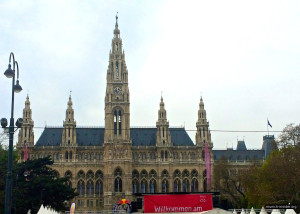 We turned right on Ringstrasse and continued our walk in the direction of Rathaus (City Hall). We passed by the Austrian Parliament building. This enormous piece of architecture looks really impressive. It was built in the 19th century and stylized as Ancient Greek structures. An incredible number of statues representing actual and mythological figures from Antiquity are located on the ramp leading to the main entrance and on the building roof. Especially impressive is the tall statue of Pallas Athene capped with a golden helmet. This statue is in the center of a fountain in front of the building. A nice park, Volksgarten, is across the street from the Parliament. A few minutes’ walk further down Ringstrasse is the Rathaus square. Two architectural masterpieces are located on this square, Rathaus Wien and, across the street, Burgtheater (Austrian National Theatre). They say that it is best to admire them at night when the buildings are illuminated, but we liked them even in the late afternoon. For that evening we had planned to see the best for the night viewing – the Vienna Opera House.
We turned right on Ringstrasse and continued our walk in the direction of Rathaus (City Hall). We passed by the Austrian Parliament building. This enormous piece of architecture looks really impressive. It was built in the 19th century and stylized as Ancient Greek structures. An incredible number of statues representing actual and mythological figures from Antiquity are located on the ramp leading to the main entrance and on the building roof. Especially impressive is the tall statue of Pallas Athene capped with a golden helmet. This statue is in the center of a fountain in front of the building. A nice park, Volksgarten, is across the street from the Parliament. A few minutes’ walk further down Ringstrasse is the Rathaus square. Two architectural masterpieces are located on this square, Rathaus Wien and, across the street, Burgtheater (Austrian National Theatre). They say that it is best to admire them at night when the buildings are illuminated, but we liked them even in the late afternoon. For that evening we had planned to see the best for the night viewing – the Vienna Opera House.
The Opera House was the next point of interest on our self-guided tour. We could have taken a tram to go there, but we did not feel tired, so we walked back about 1.5 km along the Ringstrasse past the Parliament and Maria-Teresien-Platz. It was already dark when we came to the Opera House. The building looked just great in the evening illumination. The performance, ballet “Masterpieces of the XX century” was about to begin in half-hour. The spectators were arriving, most in expensive evening gowns and smockings. It felt almost as watching a red carpet event on TV. I noted for myself that in German theaters the dress code seemed to be more democratic. Some people were offering tickets at scalper prices. It was clear that the tickets were in demand; there are enough wealthy residents and especially tourists. For simpler folks, like us, there is an alternative to watch the performance for free, though not inside the theater. A large screen is installed outside the Opera House with several rows of chairs in front of it. So, people can watch and listen to the live broadcast from the theater stage. We, too, settled there and enjoyed the show for about half-hour: beautiful ballet and music, all in the open air; in a word, the atmosphere was cozy. BTW, even here all the seats in the “parterre” were occupied.
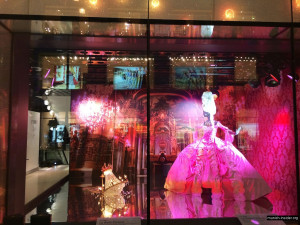 We finished the evening in a cozy restaurant on the Neue Markt square called “Medusa”. We walked there along the pedestrian street called Kärntner Strasse. It is a shopping street with numerous stores and fashion boutiques. A new Swarovski store, “Swarovski Megastore” opened recently at Kärntner Strasse 24. It is a huge three-storey shopping center with a magnificent exterior and interior design. In fact, the entire street is very lively. We got a table outdoors with a view on Kärntner Strasse. The place, “Medusa,” is not inexpensive, but we liked the dinner and the atmosphere around.
We finished the evening in a cozy restaurant on the Neue Markt square called “Medusa”. We walked there along the pedestrian street called Kärntner Strasse. It is a shopping street with numerous stores and fashion boutiques. A new Swarovski store, “Swarovski Megastore” opened recently at Kärntner Strasse 24. It is a huge three-storey shopping center with a magnificent exterior and interior design. In fact, the entire street is very lively. We got a table outdoors with a view on Kärntner Strasse. The place, “Medusa,” is not inexpensive, but we liked the dinner and the atmosphere around.
For information: that day we managed to see less than a half of the Vienna inner city (old town), more likely only about one-third.
Second day:
Viennese palaces and parks
The next day we continued our tour of the “Habsburgs’ World” and went to the Schönbrunn palace, the summer residence of the Austrian emperors. We took U-Bahn line U4 to the Schönbrunn station. One can also get to Schönbrunn by tram.
One can figure out right away that this was a summer residence – a wonderful well-kept park is probably the main attraction of this place. The palace itself is smaller and more modest than Hofburg; however, its architecture looks more integral and less ponderous. We arrived rather early, before ten o’clock, and there were already several tour buses on the parking lot and crowds of visitors. Actually, we did not know that the palace opens at 8:30 am. We had to stand in line to the box office for about thirty minutes. So, if one knows exactly when they want to have a palace tour, it is probably better to buy tickets online. There are numerous variants of admission tickets, depending on your interests and time available. Of course, there are discounts for children, students, families and persons with disabilities. To see the palace interior one can buy a Guided Tour, Grand Tour or Imperial Tour. The latter two tours are with audio guides which are available in many languages. Besides, there are tickets to the Children’s Museum and different attractions in the park – Privy Garden and Orangery, Maze-Labyrinth, and Gloriette terrace. There are also combination tickets allowing a tour of the palace and some (or all) of the park attractions.
We took the Grand Tour which is a little longer (and €3 more expensive) than the Imperial Tour. Without the audio guide we would have probably lost in the countless imperial chambers and halls. Actually, only a relatively small part of the palace is open to tourists, but it is impressive. We especially liked the Mirror Hall, where the majority of imperial receptions had taken place. They say that Mozart, as a child, played here his early works. Many famous people lived or stayed in the palace over the years, even Napoleon Bonaparte, who conducted meetings in the Lacquer (Vieux-Laque) Room. The palace tour took about an hour and then we went for a walk in the park.
By the way, the admission to the park is free except for the abovementioned sights and it is open from dawn to dusk. I must say that the park is really beautiful and worth visiting even if you are not very fond of museums. Personally, I enjoyed the park more than the palace, but this is, of course, a matter of taste. There are manicured flower beds, green lawns, neatly cut shrubs and alleys under shadow of mature trees. The Maze, which is more than two hundred years old, is cut into the shrubs. The colonnaded Glorietta pavilion is located on a small hill and offers a wonderful view of the city. There is a cozy café in Glorietta with a good Austrian cuisine. We had lunch there. Oh, I have almost forgotten that the Vienna Zoo is in the Schönbrunn Park. We did not go there, but it would probably be interesting for families with children. Zoo tickets are sold at the zoo entrance.
After lunch, we went to another summer palace, but this time it was not a monarchs’ residence. The Belvedere Palace was once owned by Prince Eugene of Savoy, the famous Austrian military commander. This general stopped the Ottoman Turks advancing to Austria in the 17th century. For this military success he received the Belvedere palace as a royal gift.
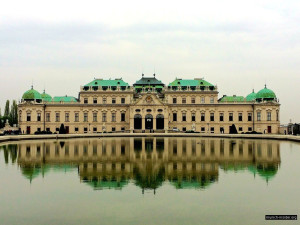 We took the D line tram from the Vienna Opera to Belvedere. The palace is not as lavish as Schönbrunn; however, the park is very nice too and also offers a magnificent view of the city. This is why they built suburban residences on the hills. In addition to the tour of the palace’s luxury rooms (we especially liked the Marble Room), one can see paintings of famous artists in the Austrian Gallery. However, one would need at least two hours for the latter, so we took only the palace tour because we also wanted to visit a couple of other places in Vienna afterwards.
We took the D line tram from the Vienna Opera to Belvedere. The palace is not as lavish as Schönbrunn; however, the park is very nice too and also offers a magnificent view of the city. This is why they built suburban residences on the hills. In addition to the tour of the palace’s luxury rooms (we especially liked the Marble Room), one can see paintings of famous artists in the Austrian Gallery. However, one would need at least two hours for the latter, so we took only the palace tour because we also wanted to visit a couple of other places in Vienna afterwards.
While in Vienna, we were advised to see some modern architecture as well, in particular, the unique residential house called Hundertwasserhaus. We went through the Belvedere Park down to the Rennweg tram stop and took a tram to the Maxergasse stop, which is close to the Hundertwasser house. This colorful house is located in a residential area, its street address is Kegelgasse 34-38. Its architecture is really peculiar: there are no clear geometric shapes and the facade is a medley of different colors with lots of greenery, even on the roof. Hundertwasser, the well-known Austrian artist and architect, embodied in this apartment building his idea of the unity of man and nature. BTW, he did the entire project pro bono. It is really worth seeing, one cannot find anything similar anywhere else.
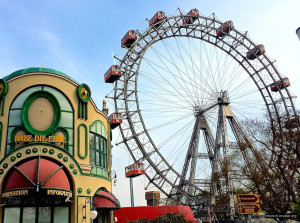 We had a couple of hours before the return train to Munich, so we decided to once again to take a view over Vienna. This time we headed to the oldest functioning Ferris wheel in the world, which is located in the Prater Park, the favorite the favorite pastime destination of Vienna residents. This old ride is more than a hundred years old and produces all sorts of noises and squeaks from its seasoned parts while it slowly rotates. However, this did not scare us and we still wanted to give it a try for a farewell view of Vienna. We climbed up higher and higher as the wheel turned and looked at the outlines of the city in the twilight. We could already recognize many of the buildings and thought that in these two days Vienna had become no longer so foreign to us.
We had a couple of hours before the return train to Munich, so we decided to once again to take a view over Vienna. This time we headed to the oldest functioning Ferris wheel in the world, which is located in the Prater Park, the favorite the favorite pastime destination of Vienna residents. This old ride is more than a hundred years old and produces all sorts of noises and squeaks from its seasoned parts while it slowly rotates. However, this did not scare us and we still wanted to give it a try for a farewell view of Vienna. We climbed up higher and higher as the wheel turned and looked at the outlines of the city in the twilight. We could already recognize many of the buildings and thought that in these two days Vienna had become no longer so foreign to us.
Final note: Usually, I try to find a place to eat popular with locals, and more often than not it is away from the city center. We did not have time for that during the first trip to Vienna described above. However, on another occasion we tried one of such eateries. It is called Strandcafe and can be easily walked to in 10-15 minutes from the U-Bahn Alte Donau station.
It is not a fancy establishment, but we liked the food and the view on the river (Strand means beach in German). Their Viennese Schnitzel (veal cutlet) was outstanding and the portions were twice as large as one can have in touristy places in the downtown. Make sure to ask for Schnitzel vom Kalb because they also serve pork schnitzels, which is a rather common dish in Germany and Austria (though it is good as well). The other specialty they have is spare ribs.
 Munich Insider Tips and advice from Munich residents for self-guided tours and trips
Munich Insider Tips and advice from Munich residents for self-guided tours and trips
